MOST GUYS GO about their business in the gym with one of two goals: They either want to build strength or gain muscle (or just as likely, they hope to achieve a bit of both). To achieve either of those outcomes, they can’t just show up and perform random exercises assuming they’ll succeed. They’ll need a plan—and the best of these are built around compound exercises.
Compound exercises (also known as multi-joint movements) are the big-name exercises that often serve as a short-hand for strength. Bench presses, squats, deadlifts, rows—they’re all compound exercises. All of these movements require multiple muscle groups working together to complete a rep—and because of this, you’ll be able to load them up with lots of weight, a major factor in building strength (and, to a lesser degree, muscle too).
“Most of the time, when done correctly, compound movements could involve the entire body,” says Don Saladino, NASM, celebrity trainer and Men’s Health Advisory Board member. “When you look at an exercise like a squat, even though traditionally people are using this as a lower body movement, there’s so many other body parts that are being involved.”
Compound exercises also provide an opportunity to build strength and size while improving how the body functions. Most of these movements echo the way that you operate in real life—think about how often you squat to sit down or hinge at the hips to pick something up off the floor. Your body rarely moves at just one joint, so it makes sense to train that way, too.
Before building up a workout program, you’ll benefit from learning a bit more about compound exercises and how to use them.
What Is a Compound Exercise?
A compound exercise is a movement that requires the activation several muscle groups through the movement of at least two joints. Take the squat, for instance. There’s movement at the hips, knees, and ankles, requiring muscle activation from your glutes, hamstrings, quads, core, and more. Depending on how you load the movement, even more muscle groups can get involved. For an example of the simpler isolation exercises, Saladino offers up biceps curl. He notes that only the elbow is flexing and extending, allowing the isolation of the biceps muscle. These types of movements won’t be able to be loaded as heavily, and are less efficient than compound exercises.
What Are Benefits of Doing Compound Exercises?
Build Strength and Muscle
Since compound movements harness more than one muscle group working in tandem to complete the exercise, you’ll be able to load them with more weight than when you isolate one muscle. This is a reliable way to build strength as you add more load to challenge your muscles to adapt and grow in response to increased stimulus—it’s the principle known as progressive overload. You’ll be able to challenge your muscles more with these big movements.
Efficiency
Compound exercises work multiple muscle groups at once, so you’re able to train your whole body with fewer exercises than a routine with only isolation movements. While you may think about a loaded squat as a lower body movement, for instance, the exercise also depends on your core muscles to stabilize the spine. Your lower body should also drive the deadlift, your back muscles are crucial to help to keep the load in place as you pull from the floor. With all of these muscle groups working together, you’ll also burn more calories. Overall, these exercises are “going to give you better bang for your buck,” says Eric Sung, C.S.C.S.
Stability
Since you’ll use multiple joints at once with compound movements, stability is a key to success. Small stabilization muscles will fire up to support the motion through our joints while our bigger muscles power the movement itself. Compound exercises will almost always, “force a lot of stability,” Saladino says. “It’s going to require more neuromuscular coordination.”
Stamina
If you’ve ever felt winded after a set of front squats, don’t mistake the need to catch your breath for being out of shape. There will be significantly more energy output when you’re working through a set of a compound exercise compared an isolation exercise, according to Saladino. They carry a more intense “cardiovascular component,” he notes. “When you’re doing an exercise like a squat, a lunge, a deadlift, it’s incredibly taxing to the nervous system.” The central nervous system will play a big role in compound exercises, too. As you perform these big moves, you’ll experience this type of fatigue—meaning that it will be important to come to them fresh.
How Should You Program Compound Exercises Into Your Routine?
Compound movements should have a place in your routine, no matter your training frequency. “I don’t care if I’m programming up a routine that’s twice a week or five days a week—I’m including some form of a compound movement in every workout,” Saladino says.
Compound movements are incredibly versatile, which makes them easy to slot them into an everyday routine. They don’t always have to be loaded, either. A bodyweight squat is still just as much of a compound movement as a barbell back squat. Because of that, you can vary the load, intensity, and muscular focus of your compound exercises every time you workout. “There’s so many different ways that you can set up compound movements, to where it can be incredibly user friendly,” says Saladino.
If you do decide to dial in on a heavy compound lift, like a squat or a deadlift, complete it before you do any isolation work so that you’re working on your most energy taxing exercise while you still have the most energy. For beginners, Sung suggests three to five sets of five to 12 reps, depending on the level of load—if you’re going for heavy weights, keep the reps low.
What Are Common Mistakes Made When Doing Compound Exercises?
Compound Exercises Are Not One-Size-Fits All
Not all compound exercises are for everyone. Just because a barbell back squat is one of the most commonly programmed lifts, it might not be a fit for you depending on your body and your abilities, Saladino says. Whether you have preexisting issues due to injuries, an anatomy that isn’t ideal for particular movements, or restrictions due to mobility, you might find that common exercises don’t work for you. The good news is there are several different ways to get your compound lifts in, like switching up the placement of the load or the equipment.
Don’t Overdo It
If you’re new to strength training, it might take you a little while to be able to build up a base for what an exercise should feel like. New lifters might not “have the muscular endurance, or the stabilization, to be able to maintain good position,” throughout a lift, Saladino says.
Be honest with yourself about your fitness level. Tailor the reps, sets, and load accordingly. You may be used to seeing fitness influencers and athletes max out barbell squats and deadlifts, but many don’t need to be doing that.
“A lot of people end up going to failure in the beginning. And they don’t have that tolerance and understanding that failure is really taxing,” Saladino says. “It’s okay in the beginning to cut yourself short a rep or two [short] so you’re maximizing every repetition, and build[ing] that foundation over time.”
Don’t Under-Do It, Either
Many make the mistake, though, of never challenging themselves on bigger compound exercises—and that’s doesn’t just mean they’re not lifting heavy. There are several ways to make compound movements more challenging without stacking on the plates, Sung says—like adding pause reps or slowing down the eccentric portion of an exercise. These kinds of things will get you away from your same sets and reps of the same weight, helping muscle and strength grow.
The 8 Best Compound Exercises
Barbell Back Squat
WHY: There’s a reason squats are one of the most touted compound exercises. The movement is powered from the hips and knees which fires up the glutes, hamstrings, quads, and core—all while depending on the back muscles to be engaged to support the load. Plus, there are plenty of variations that will allow you to put more stress on specific muscles.
How to Do It:
- Begin by ducking under the bar and placing it across your upper back—avoid placing it on your neck. Create tension across your lats and mid-back as you grip the bar.
- Straighten out the knees to unrack the bar and take a step back. Place the feet slightly wider than shoulder-width.
- Push your butt back and bend your knees, as if you’re sitting back into a chair. Keep your core engaged to keep your chest tall.
- Lower until thighs are just lower parallel to the ground, or as your mobility allows. Maintain your gaze just in front of you. Push back up with your weight evenly distributed through your feet.
Reps and sets: 3 sets of 8 to 10 reps
Deadlifts
WHY: Deadlifts are a “really functional movement that everyone should be able to do whether it relates to picking up groceries, etc, are all daily life activities the deadlift will help with,” Sung says. The hip hinge is important, and you’ll master it here.
How to Do It:
- Start with your feet about shoulder-width apart under the bar. Your shins should be close to or actually touching the bar.
- Push your butt back and hinge at the waist to bend down to grab the bar on either side of your legs. Grasp it in both hands using an overhand grip.
- Make sure your hips are lower than your shoulders. Squeeze your shoulder blades together to straighten out your spine, pulling the slack out of the bar.
- As you pull the weight up, keep the bar close into the body. Squeeze the glutes until your shoulders, hips, and knees are all stacked on top of each other.
Reps and sets: 3 to 4 sets of 6 to 8 reps to start
Pushup
WHY: The pushup is a standard bodyweight exercise that works way more than the chest. The exercise is very scalable, making is a great pick for anyone to add to their routine, Sung says. There are plenty of varieties for different points of focus, too.
How to Do It:
- Start in a high plank position with your hands on the floor, wrists stacked beneath your shoulders, with your spine in straight line.
- Think about screwing your hands into the ground. Keep your neck in a neutral position directly below you.
- Lower the chest to the ground with your elbows about 45 degrees away from your body.
- Push all the way up.
Reps and sets: 3 to 4 sets of 12 to 15 reps
Inverted Row
WHY: Master the inverted row to build back strength. Maintaining the straight body position will also require glute and core engagement.
How to Do It:
- Find the bar placement that’s best for your ability. The higher you place the bar, the easier this movement will be.
- Grab the bar with an overhand grip, a little wider than shoulder width. As you pull up, it’s crucial to maintain a straight spine throughout the entire move. Do this by squeezing your abs, glutes, and shoulder blades.
- Think about pulling the bar to your chest. Don’t arch your back to reach the bar.
Sets and reps: 3 sets of 8 to 10 reps
Lunges
WHY: With unilateral movements, the “entire body is stabilizing—you really are utilizing tension techniques throughout the whole body,” Saladino says. Lunges are a great exercise to begin unilateral training. They can be loaded up with a variety of equipment, and engage your quads, glutes, and core.
How to Do It:
- Start in an athletic stand with your feet hip-width apart.
- Step one foot forward, sinking the back leg down with it until you hit 90 degrees in both knee joints. Keep your chest tall.
- Drive through the front heel to return your forward leg back to the standing position.
Sets and reps: 3 sets of 8 to 10 reps per leg
Bench Press
WHY: It’s a staple upper body exercise for a reason, and the bedrock of many a chest day workout. The classic bench press does more than just work the chest, however. Powering the bar up depends on the triceps, and you’ll need to lock in on the bench by engaging your mid-back and core.
How to Do It:
- Lie down on the bench with your feet flat on the ground. Keep your glutes engaged, and tighten up your core by thinking about squeezing your belly button back towards your spine.
- Start with the barbell or dumbbells directly over your shoulders. Inhale as you lower, think about creating a 45 degree bend in your arm pits. Keep your forearms perpendicular to the ground.
- Exhale as you press up.
Sets and reps: 3 sets of 8 to 12 reps to start
Bent-Over Barbell Row
WHY: This heavyweight row variation recruits your big back muscles to pull, but also challenges your lower body to stay in proper position as you progress through the set. Bonus: if you flip to a supinated (underhand) grip, you’ll crush your biceps even more, too.
How to Do It:
- Approach the bar as you would a deadlift: stand with your feet about hip-width apart, then push your butt back and hinge at the hips to bend over and grasp the bar.
- Keep your head in a neutral position, and squeeze your glutes and core to create tension.
- Raise your torso slightly to raise the weight off the floor.
- Move at the elbow and shoulder to row the bar to the top of your ribcage. Aim to ‘break’ the bar against your chest, pausing in the top position if you can.
- Control the weight back down to the starting position, maintaining your posture.
Sets and reps: 3 sets of 8 to 10 reps
Ab Wheel
WHY: This small piece of equipment packs a big punch. If you have an ab wheel available to you, don’t be afraid to try it out. This movement encompasses pretty much all of your abdominal muscles, as well as your shoulders, glutes, and lower back muscles.
How to Do It:
- Start on your knees, with your hands on the roller.
- Slowly roll as far away your body while maintaining a neutral spine as if you were doing a plank. If your hips start to hike or overextend, you’ve gone too far.
- Focus on keeping the movement slow and controlled.
Reps and sets: 3 to 5 sets of 5 reps
Cori Ritchey, NASM-CPT is an Associate Health & Fitness Editor at Men’s Health and a certified personal trainer and group fitness instructor. You can find more of her work in HealthCentral, Livestrong, Self, and others.
Brett Williams, a fitness editor at Men’s Health, is a NASM-CPT certified trainer and former pro football player and tech reporter who splits his workout time between strength and conditioning training, martial arts, and running. You can find his work elsewhere at Mashable, Thrillist, and other outlets.


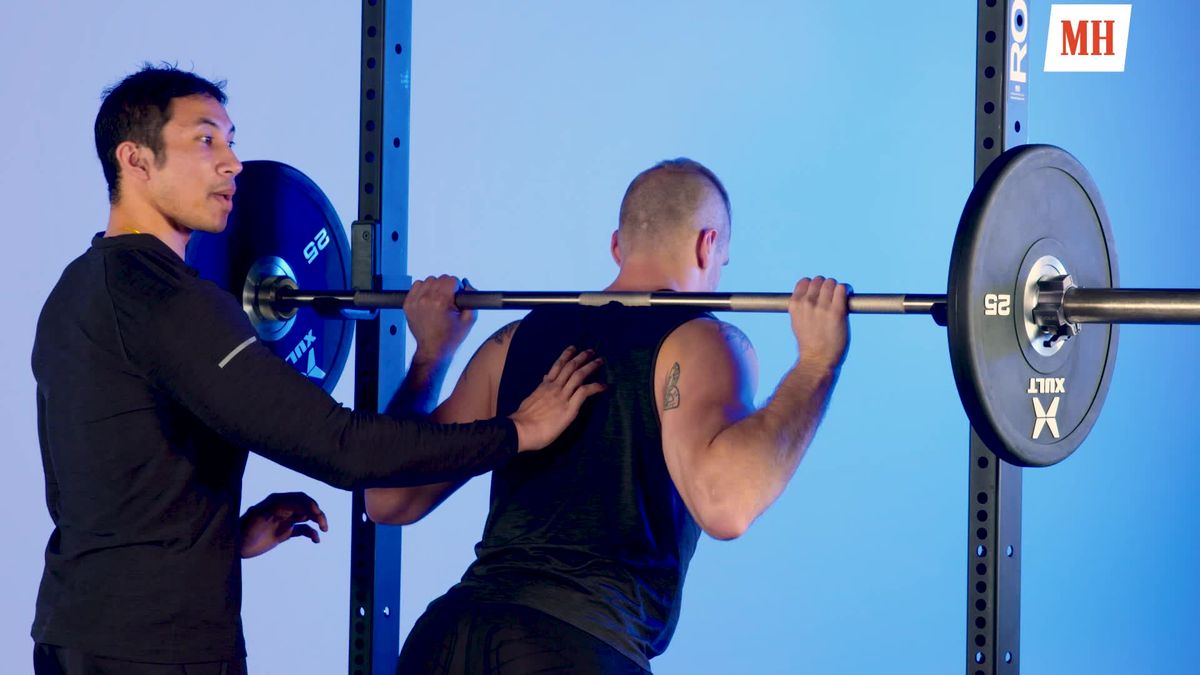
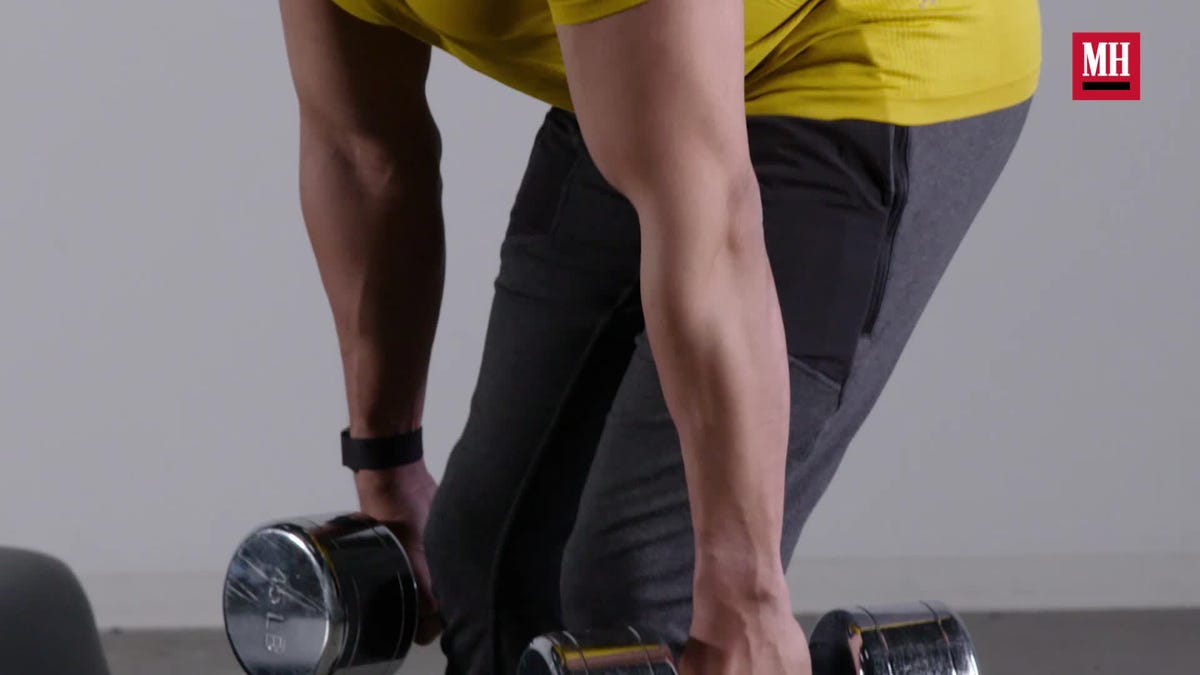
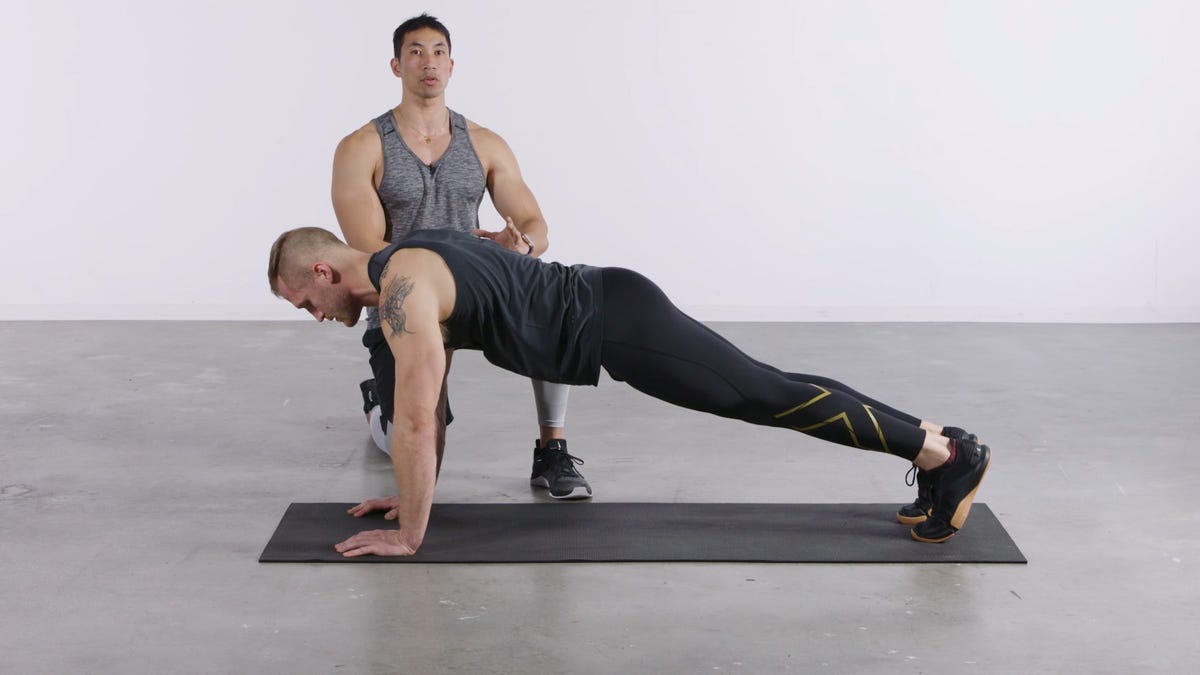
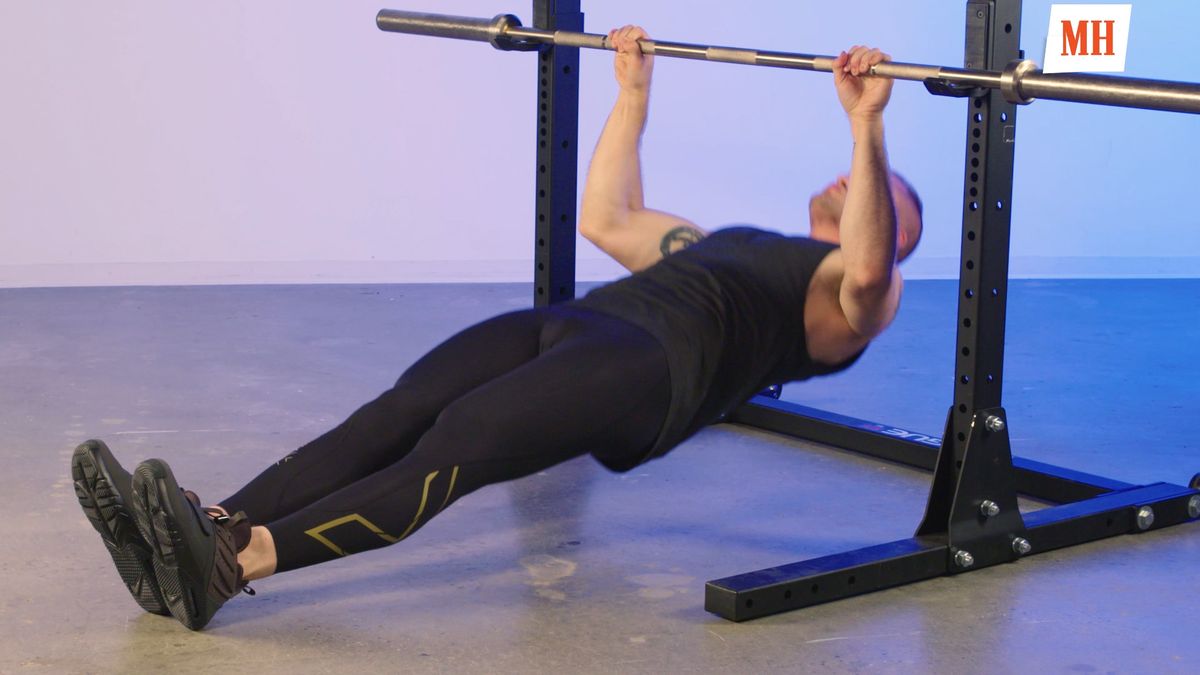
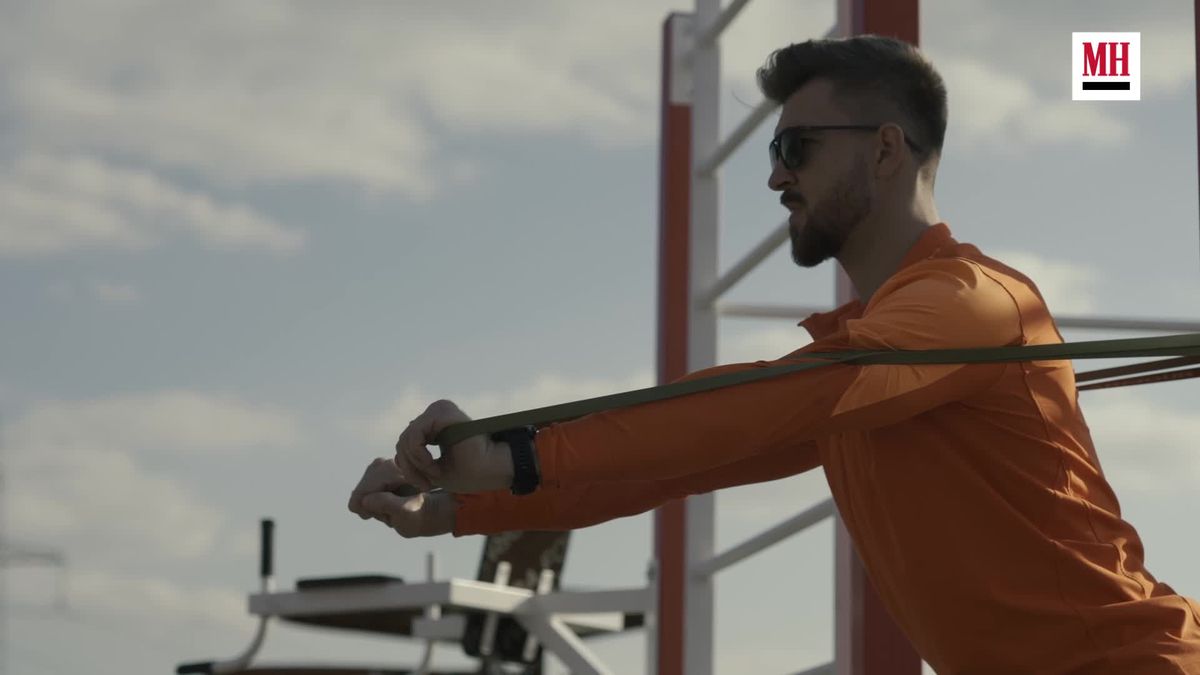


Comments are closed.